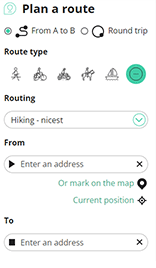Source: GroeneHartstocht
Hellendoorn first appears under that name in history in the year 1275. In old episcopal accounts it is mentioned that the pastor/vicar of Hellendoorn (at the time written as Hellendere) donated money for the crusades. After that, Hellendoorn disappears from view for more than 100 years. In 1381/1383, again in episcopal accounts, a number of heirs in Hellendoorn are mentioned, including Lentfordinck, Schurink and Roessingh. However, the church of Hellendoorn is probably still a fair bit older than 1275. Why a church was built in Hellendoorn and why exactly that place remains shrouded in the mysterious veils of the past. The excavation of 1961 revealed that another wooden building stood on the site of the Romanesque central part of the church. From the fact that a pre-Romanesque tomb was found under this building, it can be said with some certainty that there was already another church building in front of the Romanesque church. After all, the place was higher than the immediate surroundings, so when the Regge went beyond its banks, it remained dry there. An ideal location for any building.
The village of Hellendoorn then really comes to the fore in history through the activities of 'goedsheeren' and 'heirs', i.e. the people who owned the heirs within the village and were therefore in control. The market statutes date from 1502 and are held by a copy of 1604. The problems of eternal sand drifts, marke boundary stones that are placed there by neighboring marks, conflicts about the grazing of cattle by neighboring marks on the Helder market lands, the maintenance of the Helderbrugge and the constant lack of money form the main content of these books.
Since the church was located in Hellendoorn and the surrounding marches also went to church here, Hellendoorn also received the status of 'most important marke' within the kerspel, which subsequently also bore the name Hellendoorn. The kerspel can be regarded as the forerunner of the current municipality. A historical explanation for the fact that the municipality still has the name Hellendoorn.
The Eighty Years' War and the accompanying skirmishes, or worse, battles for Schuilenburg will not have left Hellendoorn untouched and disturbed the peace. The story goes that Bernard van Galen (Bommen Berend), the bishop of Munster, visited Schuilenburg Castle. Yet we find little information about large-scale looting, the burning of farms and other acts of violence in the ecclesiastical or secular writings that remain to us about that eventful period. The written history of Hellendoorn really only gets off to a good start with the French era. At the time, the French government forced them to adopt surnames and to officially keep civil records such as birth, marriage and death and more of these administrative matters. People did not see the point of it at the time, but we in the 21st century are very happy with it. After all, it is the beginning of a comprehensive reflection of our past.
Around 1830, Hellendoorn apparently did not want to be visited by the then built road from Zwolle to Almelo. Was it out of lack of money, or out of disgust with something new and the consequences of which one could not foresee? According to some, it was a missed opportunity. In another respect, it might have been better that way. Now at least we have a village with an old historical core that we can be proud of. Otherwise, there would not have been much left of the old village by now. Due to necessary expansions that the textile industry would have entailed, if it had been built in or in the immediate vicinity of Hellendoorn, Hellendoorn as a village would no longer exist in its current form. Probably only the old church would remind of the village of yesteryear.
Fortunately, we still have a lot that reminds us of our past in Hellendoorn. In the various museums, including village museum De Valkhof with, among others, the Johanna van Burenmuseum, museum farm Erve Hofman, the Bakery and Ice Museum ample attention is paid to the activities of our ancestors. And also the mills De Hoop and De Wippe, 't Oale Karkhof and not to forget a large number of farms, old houses and left and right a number of old "brinkies" with trees keep the attention for the past, for those who want to see it. Let us try to cherish what we have left and, as far as possible, preserve it for future generations.
Source: Historische Kring Hellendoorn
![]() | | Public | Dutch
| | Public | Dutch
Discover the most beautiful and popular trails in the area, carefully bundled into appropriate selections.
Source: GroeneHartstocht
Discover the most beautiful and popular attractions in the area, carefully bundled in appropriate selections.
Source: GroeneHartstocht
With RouteYou, it's easy to create your own customised maps. Simply plot your route, add waypoints or nodes, add places of interest and places to eat and drink, and then easily share it with your family and friends.
Route planner

<iframe src="https://plugin.routeyou.com/poiviewer/free/?language=en&params.poi.id=8417893" width="100%" height="600" frameborder="0" allowfullscreen></iframe>
Try this feature for free with a RouteYou Plus trial subscription.
If you already have such an account, then log in now.
© 2006-2024 RouteYou - www.routeyou.com